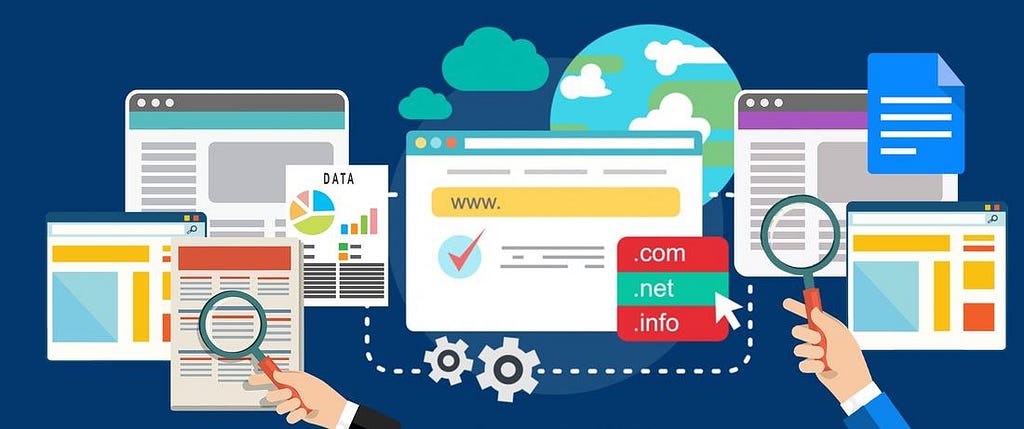Latest news about Bitcoin and all cryptocurrencies. Your daily crypto news habit.

Website scraping is a technique used to extract large amounts of data from web pages and storing them on your computer. The data on the websites can only be viewed using a web browser, and it cannot be saved for your personal use. The only way to do that is to copy and paste it manually, which can be a tedious task. It could take hours or even days to complete the job.
However, this whole process can be automated using web scraping techniques. You don’t need to copy and paste the data manually; instead, you can use web scrapers to finish the task within a small amount of time. If you already know what scraping is, then chances are you know how helpful it can be for marketers and organizations. It can be used for brand monitoring, data augmentation, tracking latest trends, sentiment analysis to name a few.
There are a lot of scraping tools available which you can use for web-based data collection. However, not all those tools work efficiently as search engines do not want scrapers to extract data from its result pages. But using an advanced infrastructure like the SERP API, you can scrape the data successfully. Other tools like scrapy, parsehub provides an infrastructure to scrape the data by completely mimicking human behavior efficiently.
While these tools are quite beneficial, but they are not entirely free for use. You can also build your own web scraper. But keep in mind, you have to be very smart about it. Let’s talk about some tips to avoid getting blacklisted while scraping the data.
IP Rotation
Sending multiple requests from the same IP is the best way to ruin you get blacklisted by the websites. Sites detect the scrapers by examining the IP address. When multiple requests are made from the same IP, it blocks the IP address. To avoid that, you can use proxy servers or VPN which allows you to route your requests through a series of different IP addresses. Your real IP will be masked. Therefore, you will be able to scrape most of the sites without a problem.
Scrape Slowly
With scraping activities, the tendency is to scrape data as quickly as possible. When a human visits a website, the browsing speed is quite slow as compared to crawlers. Thus, websites can easily detect scrapers by tracking access speed. If you’re going through the pages way too fast, the site is going to block you. Adjust the crawler to optimum speed, add some delays once you’ve crawled a few pages, and put some random delay time between your requests. Do not slam the server, and you’re good to scrape.
Follow Different Scraping Patterns
Humans browse websites differently. There is a different view time, random clicks, etc. when users visit a site. But the bots follow the same browsing pattern. Websites can easily detect scrapers when they encounter repetitive and similar browsing behavior. Therefore, you need to apply different scraping patterns from time to time while extracting the data from the sites. Some sites have a really advanced anti-scraping mechanism. Consider adding some clicks, mouse movements, etc. to make the scraper look like a human.
Do Not Fall For Honeypot Traps
A honeypot is a computer security mechanism set up to detect the scrapers. They are the links which are not visible to the users and can be found in the HTML code. So, they are only visible to web scrapers. When a spider visits that link, the website will block all the requests made by that client. Therefore, it is essential to check for the hidden links on a website while building a scraper.
Make sure that the crawler only follows links which have proper visibility. Some honeypot links are cloaked using the same color on the text as that of the background. The detection of such traps is not easy, and it will require some programming skills to avoid such traps.
Switch User Agents
A User-Agent request header consists of a unique string which helps to identify the browser being used, its version, and the operating system. The web browser sends the user-agent to the site every time a request is being made. Anti-scraping mechanisms can detect bots if you make a large number of requests from a single user agent. Eventually, you will be blocked. To avoid this situation, you should create a list of user-agents and switch the user agent for each request. No site want to block genuine users. Using popular user agents like Googlebot can be helpful.
Headless Browser
Some websites are really hard to scrape. They detect browser extensions, web fonts, browser cookies, etc. to check whether the request is coming from a real user or not. If you want to scrape such sites, you will need to deploy a headless browser. Tools like Selenium, PhantomJS are a few options that you can explore. They can be a bit hard to set up but can be very helpful in scraping.
All these tips can help you refine your solutions, and you will be able to scrape the websites without getting blocked.
How To Scrape A Website Without Getting Blacklisted was originally published in Hacker Noon on Medium, where people are continuing the conversation by highlighting and responding to this story.
Disclaimer
The views and opinions expressed in this article are solely those of the authors and do not reflect the views of Bitcoin Insider. Every investment and trading move involves risk - this is especially true for cryptocurrencies given their volatility. We strongly advise our readers to conduct their own research when making a decision.
